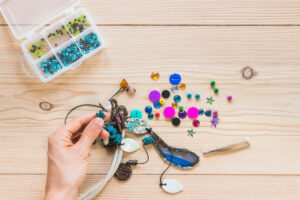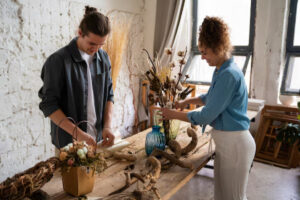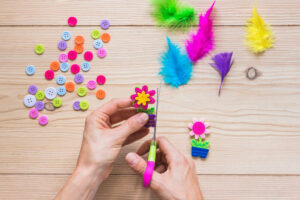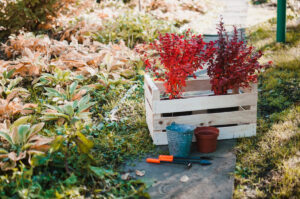The DIY & Crafts Blog
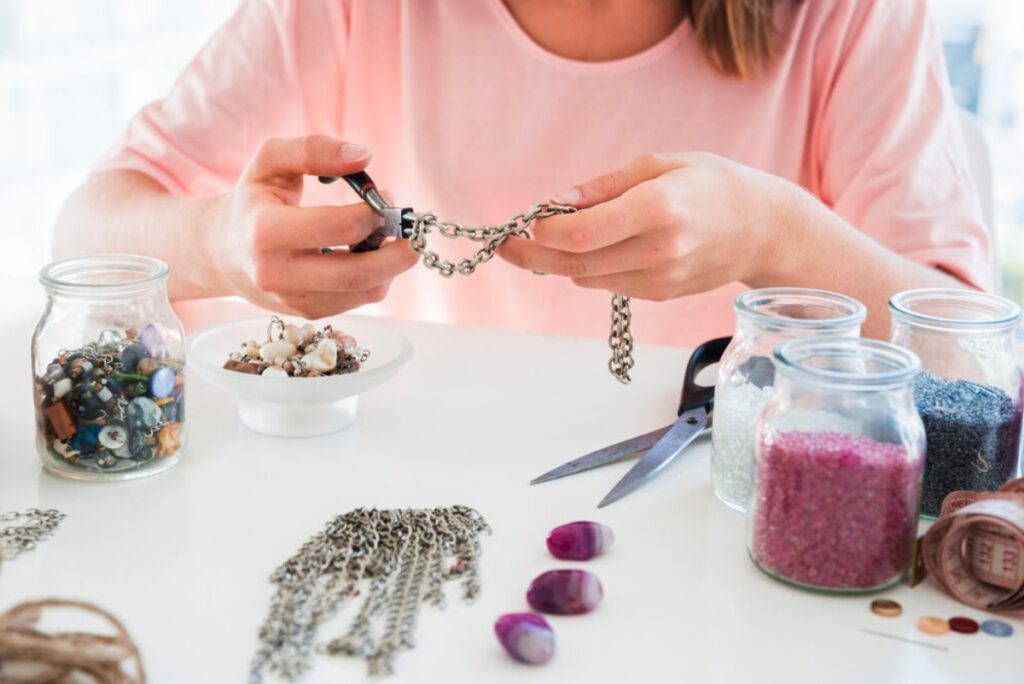
Creating Statement Necklaces from Scrap Materials
The accessories market has been dominated by fast fashion for an age. Now, with sustainability in mind, jewellery lovers and do-it-yourselfers are looking for more thoughtful and imaginative expressions of their style. Jewellery upcycling is a growing trend. It has a sustainable and new approach. So, many people are making their statement necklaces out of scrap.
This article demonstrates how to repurpose antique and vintage items as beautiful conversation-starting accessories. You’ll find tangible strategies, inspirational concepts, and weapons you can use to breathe new life into what might otherwise be wasted. Whether you’re a hobbyist or a fashion lover, wearing your art feels excellent. It’s even better when it’s good for the planet.
Why Upcycle Jewellery?
Reducing Waste and Embracing Sustainability
The fashion industry is one of the largest polluters globally, and accessories contribute significantly to its carbon footprint. Jewellery upcycling helps to:
- Reduce landfill waste
- Minimise resource extraction
- Lower the demand for new, mass-produced accessories
- Inspire creative reuse in others
Adding Personal Flair to Fashion
Upcycled necklaces aren’t just sustainable; they’re unique. No two pieces will ever be exactly alike, making them perfect for personal expression or as meaningful gifts.
Cost-Effective Creativity
Crafting jewellery from recycled materials is a budget-friendly hobby. Instead of purchasing costly new beads or chains, you can repurpose old buttons, broken accessories, fabric scraps, or even hardware components.

Gathering Materials: What to Use for DIY Statement Necklaces
Upcycled jewellery thrives on imagination. Look around your home, local charity shops, or craft swaps for potential components. Commonly used scrap materials include:
- Broken jewellery pieces – Chains, pendants, clasps
- Old buttons and beads – Especially vintage or colourful ones
- Fabric scraps – Ideal for textile-based or wrapped designs
- Metal washers, keys, bolts – For an industrial or steampunk aesthetic
- Bottle caps, corks, and plastics – For quirky, eclectic pieces
- Ribbons, lace, or yarn – For added texture and softness
Tip: Organise your materials into trays or jars by colour, material, or size to make the crafting process smoother.
Tools You’ll Need
While you don’t need a professional setup, having a few basic tools will make the process easier:
- Round-nose pliers
- Flat-nose pliers
- Wire cutters
- Jewellery wire or jump rings
- Fabric scissors
- Hot glue gun
- Needle and thread (for fabric-based pieces)
Design Principles for Upcycled Statement Necklaces
Balance and Proportion
When working with mixed materials, achieving visual balance is key. Consider:
- Weight distribution – Ensure your necklace doesn’t tilt to one side
- Symmetry vs. Asymmetry – Both work beautifully but require intention
Colour Harmony
Stick to a complementary colour palette for cohesion, or go bold with contrasting colours if your design demands it.
Focal Point
Include a central element that draws attention — a large pendant, a fabric flower, or a cluster of beads — and design outward from there.

DIY Ideas: Crafting Your Statement Necklace
1. Vintage Button Collage Necklace
- Materials: Assorted buttons, felt base, chain
- Steps:
- Cut felt into a collar or bib shape.
- Arrange and glue buttons in a layered design.
- Attach the chain using jump rings.
2. Fabric-Wrapped Bead Necklace
- Materials: Large beads, fabric strips, ribbon
- Steps:
- Wrap each bead with a fabric strip and secure with glue.
- String-wrapped beads together using a ribbon.
- Tie at the back to wear.
3. Industrial Chic Pendant
- Materials: Washers, keys, chain, wire
- Steps:
- Stack washers and keys into a pendant shape.
- Use wire to bind them together.
- Attach to a chain for a steampunk look.
4. Nature-Inspired Cork & Twine Necklace
- Materials: Wine corks, twine, beads
- Steps:
- Slice corks into discs.
- Drill small holes and string on twine, alternating with beads.
- Finish with a knot or clasp.
5. Boho Lace Collar Necklace
- Materials: Lace trim, pearls, fabric flowers
- Steps:
- Cut lace into the desired shape.
- Sew or glue decorative elements on top.
- Attach ribbon or chain to the ends.
Real-Life Inspiration: Creators Making a Difference
Trash to Treasure: Eco-Jewellery Artists
Many independent jewellery designers are turning heads with their commitment to sustainable fashion:
- Beth Macri uses repurposed metal to create sleek, modern pieces.
- Etsy sellers like ReVetro and Sweetie Pie Jewelry specialise in recycled glass and plastic accessories.
- UK-based designer Emma Ware transforms rubber and industrial offcuts into wearable art.
Their success stories demonstrate how recycling and creativity can merge to form compelling fashion narratives.
Benefits Beyond Style
Educational Value
Upcycled jewellery is a brilliant tool for teaching children and adults about sustainability, resourcefulness, and the creative process. Hosting a jewellery upcycling workshop can:
- Promote environmental awareness
- Foster fine motor skills and artistic thinking
- Build community connections
Business Potential
Many crafters who started with DIY necklaces evolved into small business owners. Handmade, eco-conscious fashion has strong appeal on platforms like Etsy, Instagram, and local markets.

Emotional Connection
Creating your accessories adds a layer of sentimentality. Whether it’s a necklace made from a loved one’s old shirt or one using trinkets from your childhood, every piece tells a story.
Common Challenges and How to Overcome Them
1. Fragile Components
Solution: Reinforce with glue, backing, or stitching; always test the strength of your necklace before wearing it.
2. Tarnishing or Discolouration
Solution: Use clear sealant or nail polish on metals to preserve their appearance.
3. Design Overload
Solution: When in doubt, edit. Sometimes, less truly is more. Start simple and build your confidence with layering.
Where to Source Scrap Materials
- Charity shops – Look for old jewellery, scarves, or buttons
- Online swaps and crafting forums – Trade or source supplies for free
- Recycling centres or upcycling hubs – Sometimes offer creative reuse materials
- Your own home – The best treasure is often already in your junk drawer
Your Statement, Your Story
Making do-it-yourself statement necklaces out of scrap materials isn’t merely a creative pastime — it’s a movement. It combines art with sustainability. It turns the overlooked into eye-catching pieces that tell one-of-a-kind stories.
As fashion evolves, what you decide to wear and how you choose to make it are growing choices with power. Upcycling jewellery will create beautiful pieces and do some good for the world!
Ready to get started? Gather your materials, make sketches or a design, and enjoy the joy of making. Share your creations on social media or gift them to someone else. Either way, your necklace will be more than an adornment—it’ll be a meaningful statement.
Looking for more upcycling inspiration? Get updates on our latest craft ideas, tutorials, and sustainable style tips by subscribing to our newsletter. And when you post your creations, don’t forget tags such as #RecycledFashionMagic!



